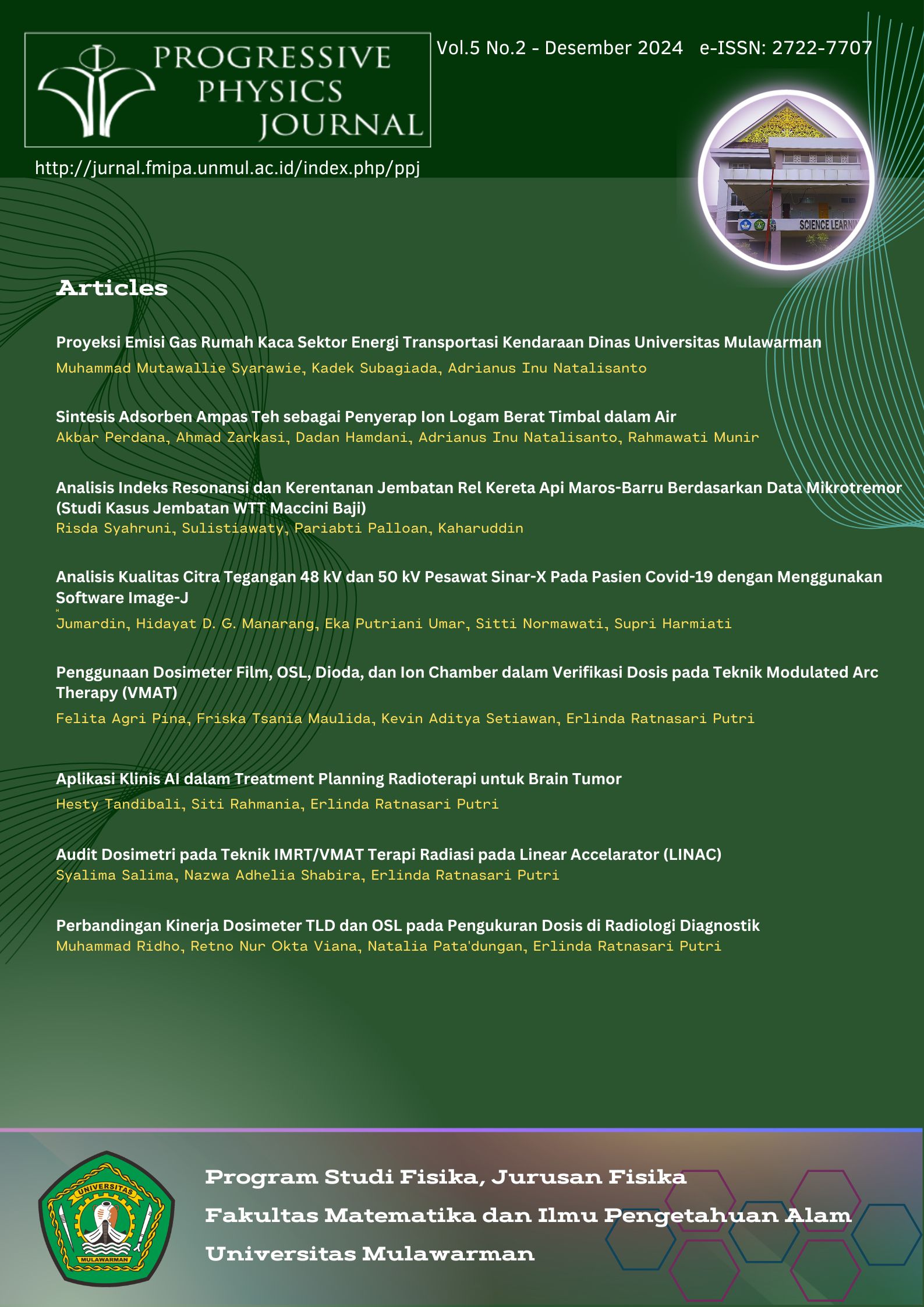Aplikasi Klinis AI dalam Treatment Planning Radioterapi untuk Brain Tumor
DOI:
https://doi.org/10.30872/ppj.v5i2.1442Keywords:
Brain Tumor, Radiotherapy, Treatment PlanningAbstract
Artificial Intelligence (AI) has emerged as an innovation that plays an important role in radiotherapy, especially in treatment planning. Artificial Intelligence (AI) has great potential to improve the effectiveness and safety of radiotherapy, particularly in treatment planning for brain tumor. The integration of Artificial Intelligence (AI)-based techniques in MRI imaging for radiotherapy planning is a significant advancement that improves the precision and effectiveness of brain cancer treatment. This review collected and analyzed 15 scientific articles, focusing on treatment planning to be analyzed through narrative synthesis to compare and abstract the results of each study to provide an overview of the contribution of AI in improving radiotherapy accuracy. The analysis showed that AI can improve the accuracy and efficiency of brain radiotherapy treatment planning, especially in the form of automatic segmentation, fMRI and DTI data processing. AI enables improvements in brain cancer treatment by optimizing dose planning and reducing radiation exposure to healthy tissue, contributing to more precise therapy and better patient outcomes.







